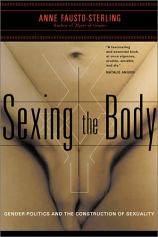The Situation
The work that sparked said discussion, and inspired today's post, was of a nude (female) model that was taken with a black light (but cross-processed to give the image an overall ethereal/dream/alien look. I made the comment that unlike the artist's previous works, this series felt like the model was an object. The photos themselves aren't the issue at hand here but the discussion that followed afterwards.
A suggestion to remedy the situation that was made by one student was that the artist should include men in his own alien/implicit situations. Other students agreed. Another student then made the comment that we wouldn't find this a big deal if a woman took these sexually implicit photos. Again, people agreed (and in fact pointed out how a woman in the class did that in her portfolio). Finally, someone stated that we shouldn't necessarily bring up a feminist discourse when analyzing works of art as we lose out from the beauty of the piece.
But, in my opinion, how is this double standard justifiable? Objectification IS objectification regardless of the biological sex of the creator!
Objectification Should Not Be the Norm
Women can objectify other women, just as men can objectify other men. Objectification is not restricted by gender though it can be stopped by responsible creation.

Let's use this BMW ad as an example. Would this be less offensive if the director was female? No. Regardless of the creator's gender, the objectification of the female model in this ad is quite apparent and completely ridiculous.
Masculinity As An Object
Unfortunately for my classmate, adding men to his project won't be the quick-fix solution that he might have been looking for to solve his woes. Men, too, have become victims to sleazy marketing techniques. Just as women are, men are cast as sexual objects, though usually are in the power position over their female counterparts. Let's not forget that theses images almost always showcase a white privilege.
Besides the rising Adonis complex, some men may also grow complacent as they continually see women in positions powerlessness/vulnerability. These portrayals of the (hyper)sexual and violent male are offensive to males as they are to females as well.
Men sometimes aren't only portrayed as sexually aggressive beings. Trojan's Evolve campaign takes another approach, one that showcases men literally as pigs.
Homo Eroticism in Imagery?
What also confuses me is the total absence of the queer gaze that occurred in my class discussion today. Actually, I was shocked by the absence of it while searching Google as well. By suggesting that it is less offensive for a woman to cast another woman in a sexual light (and, by default, a male casting a man) ignores homosexual desire. But of course homosexual desire isn't even a consideration in the heteronormative world of advertisement and classroom discussion.
The Responsible Artist
Sometimes males objectify females. Sometimes females objectify males. Sometimes even men objectify men and women objectify other women. Just because it happens doesn't mean it is right. People as sexual objects remove individual autonomy and typecast groups in a negative light. Low self-esteem, eating disorders, violence, etc. all rise because of these representations.
As my photography teacher brought up, art in itself is a form of research. It is up to the artist to research past and present discourses in relation to their subject. The artist must bear responsibility and be able to approach a public. Afterwards, discussion can ensue and, hopefully, a movement towards understanding will take place.
Finally, to respond to my photography class' suggestion. To me, there is no justifiable objectification. Unless there is a strong element of irony or critique, to objectify is to objectify, whether you and your subjects identify as male, female, neither, or both. Besides being overdone and boring, these representations prove to be quite damaging. Besides, they don't offer anything new to the audience.






